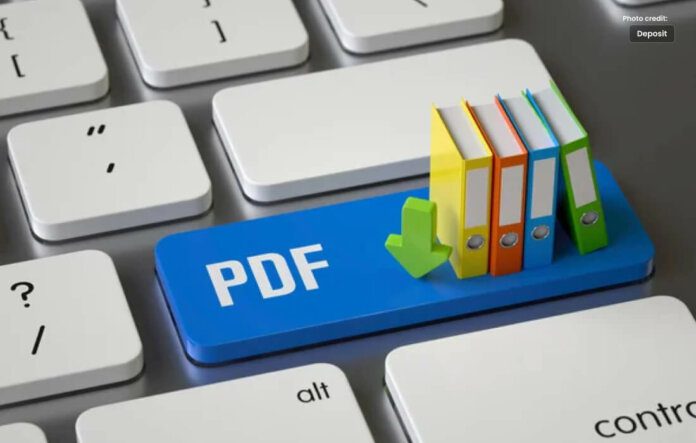Learn about PDF readers, which are computer program that let you view.
Portable Document Format (PDF) files have proliferated as a method of sharing and storing papers in the digital age. PDFs are used frequently, whether you’re reading an eBook, analyzing a contract, or downloading scholarly articles. You need a PDF reader in order to access and work with these files.
What is a PDF Reader?
A software program called a PDF reader is made specifically to open, display, and interact with PDF files. Because PDFs are a ubiquitous file type used for many things, including business papers, eBooks, forms, and more, these readers are crucial. You couldn’t effectively access the information in these files without a PDF reader.
Universal Compatibility
The universal compatibility of PDF readers is one of its most notable benefits. Almost every device, including a Windows PC, Mac, Android smartphone, or iOS tablet, can open and view PDF files. Your documents will be available to everybody, regardless of their preferred device or operating system, thanks to this cross-platform accessibility.
Security
Strong security capabilities are provided by PDF readers, enabling you to password-protect, encrypt, and digitally sign your documents. This makes PDFs the perfect option for legal papers, contracts, and financial reports because it guarantees that sensitive information stays private and unaltered.
Text Search
With PDF readers, it’s simple to find specific information within a large document. When scrolling through huge PDF files, the built-in search tool makes it quick and easy to find certain words or phrases.
Interactive Elements
Links, buttons, and other interactive components can be added to PDFs. As a result, they can be used to construct interactive presentations, data gathering forms, and clickable tables of contents for simple navigation.
Version Control
Version control is frequently supported by PDF readers, allowing you to keep track of alterations and updates made to a document over time. This is essential while working on collaborative projects and with various stakeholders.
Offline Access
When working in locations with spotty internet connectivity, PDFs can be accessible offline unlike web-based document formats.
Compact File Size
When compared to other document formats, PDFs often have reduced file sizes, which makes them perfect for distributing online and as email attachments. This provides quicker document transmission while simultaneously saving storage space.
Accessibility
Accessible PDFs are available for people with disabilities. Screen readers, text-to-speech features, and other assistive technologies are supported by PDF readers, making it simpler for everyone to access and comprehend the information contained in these documents.
Annotation and Markup Tools
Readers for PDF files provide a variety of capabilities for annotating and marking up documents. Documents can have text highlighted, comments added, shapes drawn, and even sticky notes attached. For students, academics, and professionals who need to evaluate and collaborate on documents, these features are crucial.
Preservation of Formatting
The formatting and layout of documents are preserved by PDFs, guaranteeing that what you see on the screen is what the author intended. When exchanging documents professionally, this is especially important since it removes the possibility that text or visuals will be changed or distorted during transmission.
Feature Highlights of PDF Readers
A variety of features that PDF readers offer improve your interaction with PDFs. Here are some of the most typical characteristics you might anticipate:
Viewing
You can examine the text, pictures, and graphics included in PDF files using a PDF reader just like you would a printed document.
Zoom
You can enlarge or reduce the content for easier viewing or analysis using the zoom capabilities provided by PDF viewers.
Search
A PDF document’s search function makes it straightforward to look for particular words or phrases and locate information quickly.
Editing
Some more sophisticated PDF readers also provide you the option to modify or remove text, images, or pages from a PDF using basic editing tools.
Popular PDF Readers
There are numerous PDF readers available to suit various needs and preferences. Some of the more well-liked choices are as follows:
Nitro Reader
Both novices and experts can benefit from using Nitro Reader because of its intuitive UI and strong editing tools.
SumatraPDF
SumatraPDF is a wonderful option if you’re looking for a quick and lightweight PDF reader with a simple UI.
PDF-XChange Editor
Professionals like this feature-rich PDF viewer for its robust annotation and editing options.
Foxit Reader
Foxit Reader, which is renowned for its quick speed and light weight, offers crucial PDF viewing and editing capabilities.
Adobe Acrobat Reader
The most popular option is Adobe’s free PDF viewer. Both novice and experienced users can take advantage of its full range of capabilities.
Conclusion
More than just tools for opening files, PDF readers come with a host of advantages that make document management easier, foster collaboration, and protect the integrity of your content. Whether you’re a professional, a student, or just someone who appreciates effective document handling, making the right decision to invest in a dependable PDF reader will greatly enhance your digital workflow.




